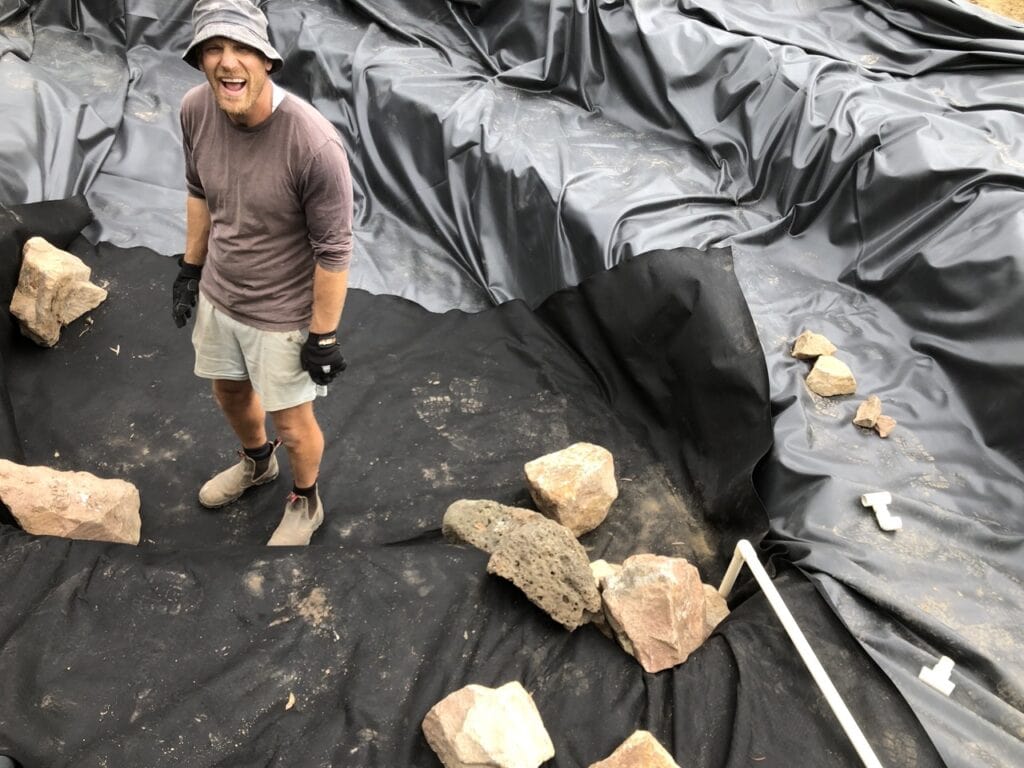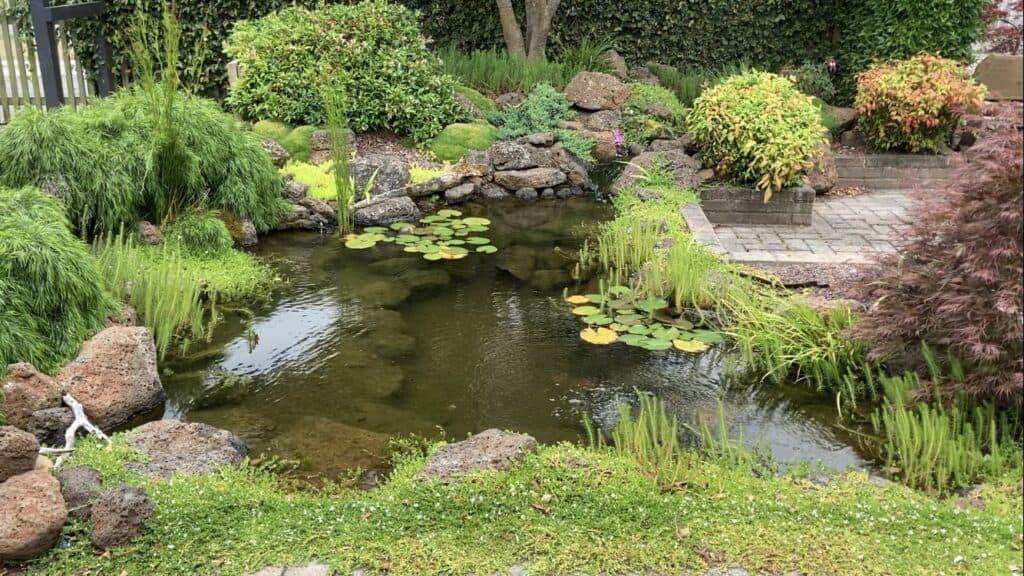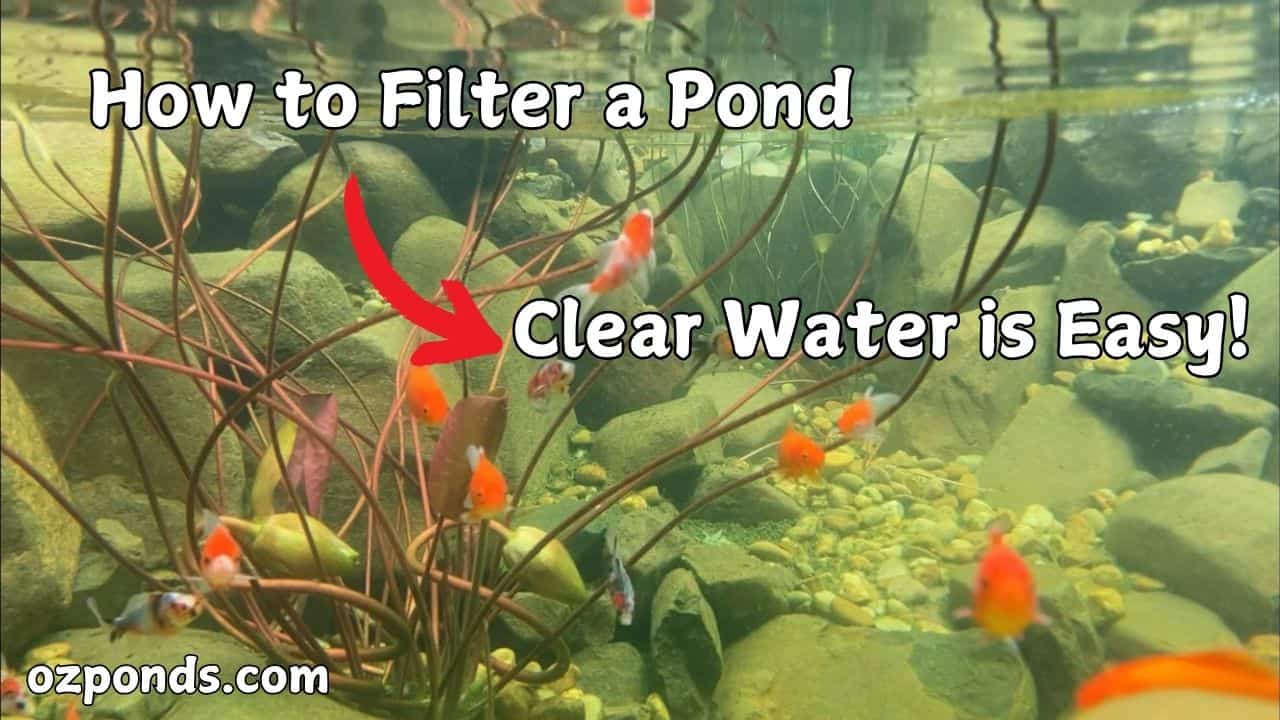Are you building a pond or have you inherited one? You might be asking yourself, how do I filter it and keep the water clean?
Filtering a pond correctly is essential for maintaining clear, healthy water and happy aquatic life. Fortunately, with the right system in place, pond maintenance can be easy and enjoyable.
In this guide, I’ll walk you through the basics of pond filtration, explain the different types of filters, and share practical tips to help you make the best choice for your pond.
If you prefer video content you can watch the video below:
Why Filtering Your Pond is Important
Without proper filtration, waste from fish, plants, and external debris (like leaves or dirt) will break down in the water. This decomposition process can lead to:
- Ammonia buildup, which is toxic to fish and other aquatic life.
- Algae blooms, causing green, murky water.
- A decrease in oxygen levels, making the pond unhealthy for its inhabitants.
By understanding the types of pond filtration available, you can keep your pond water clear, healthy, and balanced.
Types of Pond Filters
To filter water effectively, there are three main types of filtration systems:
- Biological Filters: Nurturing beneficial bacteria.
- Mechanical Filters: Capturing solid debris.
- Chemical Filters: Enhancing water quality.
Let’s dive deeper into each type.
1. Biological Filters: Harnessing Nature
Biological filters are at the heart of every healthy pond. They rely on beneficial bacteria to purify the water through natural processes, mimicking how water in streams and rivers stays clean.
How It Works:
Organic waste, like fish poop and decaying leaves, produces ammonia—a toxic nitrogen compound. Beneficial bacteria convert ammonia into nitrites and then into nitrates, which are much less harmful. These nitrates are even a valuable food source for aquatic plants.
I did write a more in-depth article on this topic or you might like the video below:
What Makes a Good Biological Filter:
The key to a great biological filter is surface area! The more area available for bacteria to grow, the better.
Popular biological filter media include:
- Lava rock or bio-balls.
- Gravel and pebbles.
- Specialty filter media designed for maximum surface area.
Again, I have an article on different types of filter media and a video.
DIY Tip:
One of the most effective biological filters is a bog filter (in my opinion). It’s essentially a large biological filter filled with rocks, pebbles, and plants.
As water flows through the bog, bacteria and plant roots remove waste and nutrients, leaving the water crystal clear.
Want to learn more about bog filter? Check out this article!

Blueprint I use to build my ponds
- All the numbers I use to design my ponds, delivered straight to your inbox
- These formulas have helped people all over the world build beautiful, low maintenance ponds, without spending a fortune.
- Access to a private community of like minded people and a chat bot that loves answering pond related questions.
2. Mechanical Filters: Removing Physical Debris
While biological filters clean dissolved impurities, mechanical filters handle solid waste like leaves, fish waste, and uneaten food. Removing these materials before they decompose reduces the workload on your biological filter.
How It Works:
Water is pushed through sponges, brushes, or fine mesh screens that trap debris. The trapped material is then removed manually or through a back-flushing system.
Popular Mechanical Filter Designs:
Click the links below to see how these systems can easily be DIY’d or watch the video below.
Skimmers: Remove debris floating on the surface before it sinks.
Intake Bays: Create a shallow area where debris naturally collects for easy removal.
Negative Edge Systems: Water and debris is collected in an underground reservoir.
DIY Solutions:
Many off-the-shelf filtration units combine biological and mechanical filtration, but you can easily build your own. Pairing a skimmer, intake bay or negative edge with a bog filter works wonders for most ponds!
3. Chemical Filters: An Optional Enhancement
Chemical filtration is optional but can be useful for specific goals. Unlike biological or mechanical filters, chemical filters directly alter the water’s composition.
Common Examples:
Phosphate binders: Reduce algae by absorbing excess phosphates.
Activated carbon: Removes impurities, odours, and discolouration for ultra-clear water.
Ozone systems: Sterilise water and improve clarity by breaking down organic matter.
If you are thinking about adding ozone to your pond watch the video below or read this article.
Chemical filtration isn’t necessary for most backyard ponds but can be a helpful addition if you’re dealing with specific water quality issues.
How to Choose the Right Filter for Your Pond
The size and type of filter you need depend on:
Pond Usage: A koi pond with high fish loads will need more filtration than a wildlife pond with minimal inhabitants.
Budget: While pre-made systems are convenient, DIY filters can save you money and often perform just as well.
For Small Ponds: A basic mechanical filter combined with a small biological filter should suffice.
For Large Ponds: Opt for a bog filter paired with a surface skimmer, intake bay or negative edge. This combination requires minimal maintenance.
Below are a couple of video showing two of my ponds. One small, one large.

Looking for affordable pond products?
I’ve assembled a list and helpful links to the products I use when building my ponds.
If you want to check it out click the button below.
Why I Recommend Bog Filters
Over the years, I’ve tried many filtration methods, but bog filters are my favorite for their effectiveness, low maintenance, and natural look. Here’s why:
- Efficient Waste Processing: A bog filter provides plenty of surface area for bacteria and plants to process waste.
- Natural Aesthetics: It blends seamlessly into the pond landscape.
- Low Maintenance: Flush the bog filter once or twice a year to remove accumulated solids—no constant rinsing of sponges or filter pads.
- Adaptability: Works well for all pond types, whether you’re keeping koi, ducks, or just enjoying a natural wildlife pond.
Pro Tip: Use my bog filter sizing calculator to help you size the bog filter and pump flow rate.
Integrating Filtration into Your Pond Design
A well-designed filtration system doesn’t just clean water—it complements your pond’s natural beauty. By using features like bog filters, intake bays, and skimmers, you can filter water effectively without the need for noisy filter boxes or visible pipes.
Here’s how to incorporate filtration seamlessly:
- Hide skimmers and intake bays with rocks or plants.
- Use a bog filter as part of a waterfall feature.
- Design your pond to encourage natural water circulation, reducing stagnant areas.
Here’s a video that shows how I put all the elements together in my courtyard pond:
Final Thoughts
Owning a pond doesn’t have to be difficult or expensive. Whether you’re building a koi pond, a wildlife haven, or a relaxing water feature, the right filtration system will keep your pond clean, clear, and healthy.
As always, feel free to explore my YouTube channel for practical demonstrations. And if you found this guide helpful, share it with others. Thanks for reading!

Join my free email list
If you would like to join my free email list click the button below.
I promise I won’t spam you, I’ll only send information I think can help you save money building and maintaining a pond.

